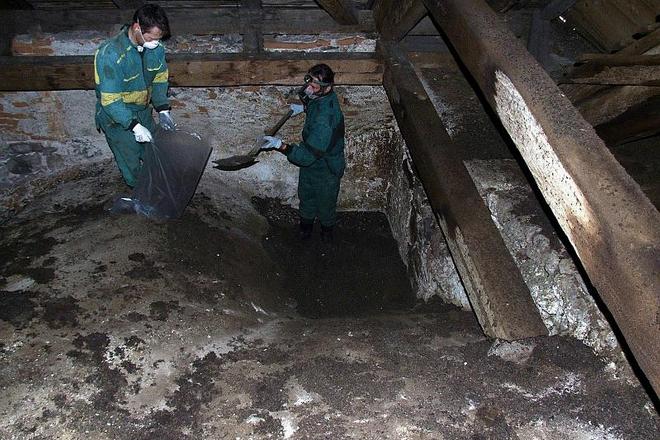THE ATTIC of the church in the village of Ratková in south-eastern Slovakia accumulated almost one and a half tons of bat excrement, zoologist Jerguš Tesák told the TASR newswire, adding that employees of the Muránska Planina National Park chose the first half of March as the most opportune time to clean and seal the attic – before the bats could return to the church from their winter hibernation in caves.
The greater mouse-eared bat (Myotis myotis) is among the largest species of bats living in Slovakia. Whole colonies of bats move to places that have a plenitude of insects on which to feed in summer. However, when taking up residence in deserted buildings or attics bats can deposit huge amounts of excrement.
“We have had great cooperation with church administrators – they are aware how many bothersome insects bats can eat but their excrement can be dangerous to the building itself after some time. In some places we have seen tons of weight. And if it remains for a very long time its smell can be detected in nearby buildings used by people. So we are happy when people call us and we can clean an affected building,” Tesák said.
Bats are not able to spend winter months in a space that does not have a constant temperature so they usually spend their winter hibernation in caves or abandoned mine shafts.
Peter Bryndza, a Muránska Planina Park staff member, explained what happens after they clean buildings like churches of the bat droppings.
“Bat excrement does not stay unused as it is a splendid fertiliser which we know usually under the name guano. Slovak legislation does not currently allow us to sell it so it is mostly used by hobby gardeners at their own risk. Each year we collect dozens of tons of guano from churches. But since we don’t have money to test it, and these tests are required by state bodies to determine whether it can be further used as a fertiliser, we are not allowed to sell it.”



 The fragrant attic of Ratková's church. (source: TASR)
The fragrant attic of Ratková's church. (source: TASR)